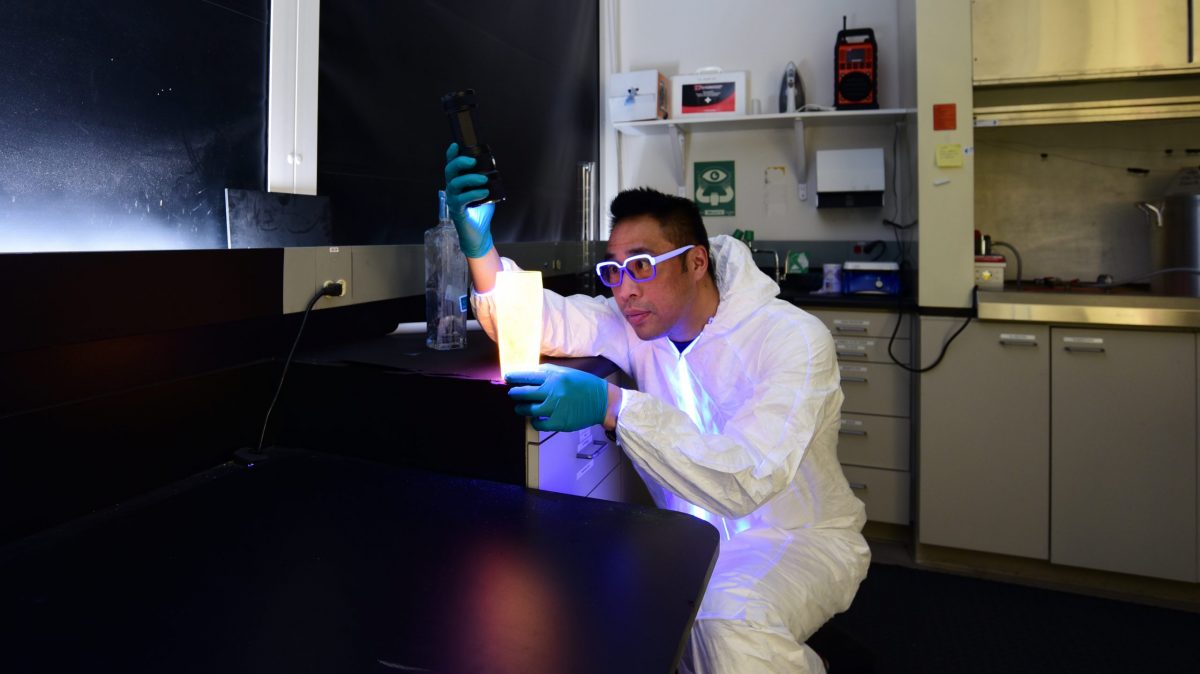Dom Toa is not the only person who joined the forensic science field after being intrigued by depictions such as those on TV’s CSI: Crime Scene Investigation. But he may be one of the few who has come full circle, now leading a program at BCIT Forensics that teaches others to follow his footsteps…or, footprints?
At university there was no question: he would pursue science, and had hopes to one day teach in post-secondary. “I originally was in fish physiology and comparative endocrinology, doing scientific research,” he explains. “But the funding wasn’t there to continue on the West Coast close to my family, so I had to look around for other ways to use science to impact society.”
The CSI effect
It was the early 2000s and CSI was serving up exciting cases solved by science every week. “CSI came out and was very important for me: I wanted to use science to catch criminals too,” says Dom.
Looking back now, he says the TV portrayal got some things wrong but many things right. While glamorized in the show, the techniques used are often good. “And the field and lab are merged on TV – in real life the field roles and lab roles are mostly separate,” he points out.
At the time, the route to forensic policing required training as an officer, doing years on patrol, and working up the ranks. Now there are growing opportunities for civilian scientists at crime scenes, in police labs, and other areas of public safety.
A day in the life of an investigator
Dom’s skills were appreciated and he was soon groomed to focus in forensics, where he’s spent the next 13 years in a mostly “field role.”
He arrives at a scene, has to figure out how to approach it, collects evidence, and only occasionally does lab work. While working for West Vancouver Police, Dom is also a part of the Lower Mainland Integrated Forensic Identification Section, and his role brings a lot of travel from Whistler to Chilliwack.
There is a typical shape to the day – travel and processing a crime scene – but they are all unique. Dom deals with a lot of property crime, stolen cars, break and enters, and also gets drawn into assault and homicide scenes when needed.
There’s no supervisor at a crime scene, so it requires a lot of independent thinking, flexibility, and ingenuity. “I know the framework, how to be thorough and methodical,” says Dom, “but at each scene I have to think my own way through.”
“Always wanted to teach”
In Dom’s first instructional opportunity, he was teaching forensic photography to police. He enjoyed leading a class, as he’d long known he would, and started teaching part time at BCIT in 2020.
Last year Dom took on a new challenge: a part-time role as Acting Program Coordinator for the Bachelor of Technology (BTech) in Forensic Investigation, Forensic Science Option, while he continues to work in the field. The program offers a solid foundation in criminal scene investigation, as well as ethics and legal procedures. Specialty streams enable greater specialization in the forensic laboratory or professional investigation.
Dom is not alone in bringing the field to the classroom: “our BTech is taught by industry experts – not primarily researchers – so the methods are really interesting.”
He loves teaching crime scene, because he’s able to create exercises based on cases he’s recently worked. “My recent experience on the job enables me to change it up, keep it fresh and relevant.” Most of the assignments he gives students are not typical in education – not a lot of paper, or multiple choice tests. “We teach the skills they need to process a crime scene using a direct hands-on approach,” he explains. “I want to give them the chance to really exercise their independent thinking.”
Dom’s connections to the sector enable him to bring in other investigators, lab technicians, and scientists to consult or speak to students. “With an ever-changing industry, I love helping further these connections between those working in public safety and BCIT.”
“We teach the skills they need to process a crime scene using a direct hands-on approach” – Dom Toa
Advice for those considering this career
Dom says this kind of career suits those who have a methodical mind, but can also think outside the box. They need to thrive on solving problems. “But in my job I also do see a lot of pain and suffering, so paying attention to mental health and resilience is important.”
For Dom it’s about impact: “there is so much satisfaction in a career where you can use your specialized technical expertise to truly help people.”

Good job Dom. Thank you for your forensic knowledge to serve the public and your teaching skill to help the young generation to get into the forensic field.
Keep it up snd best wises.
Thank you, Dom! You speak out for the victims and bring out justice ! Hope your passion in your job can be passed on in teaching !